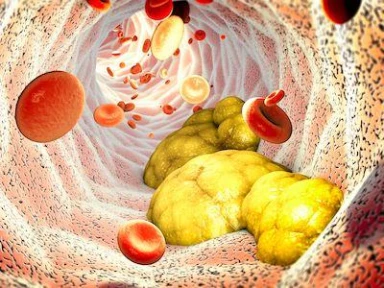Dyslipidemia performance of 2016 2019 and 2021 ESC Dyslipidemia guidelines
Five-year update on ESC/EAS guidelines for detection, prevention, and treatment of individuals at risk of a first myocardial infarction*
When compared with 2016 and 2019 ESC/EAS (European Society of Cardiology/ European Atherosclerosis Society) guidelines, the 2021 ESC guidelines improved detection and treatment of men and women who are at risk for a first ST-segment elevated myocardial infraction (STEMI).
Key Takeaway
This study aimed to evaluate whether 2021 ESC guidelines vs 2016 and 2019 guidelines improved eligibility of individuals for primary prevention statin therapy before their first STEMI, and for intensive lipid-lowering treatments in secondary prevention and found that:
-
2019 ESC guidelines helped in improved identification of individuals (mostly women) who are at risk of myocardial infraction (MI), but failed to assign direct statin therapy to 60% of them
-
With 2021 ESC guidelines, a significant improvement was noticed in detection of individuals before they have a first MI, with 1/3rd of individuals considered as very-high-risk individuals, and 2/3rd of individuals directly eligible for primary preventive statin therapy
-
The improvement was predominantly noticed in women with previously underestimated cardiovascular (CV) risk
-
Despite updating SCORE (systematic coronary risk estimation) to SCORE2, 2021 ESC guidelines have still failed to identify 1/3rd of individuals who are at risk of developing MI
-
-
Immediate initiation of PCSK9i (proprotein convertase subtilisin/kexin type 9 inhibitor) after first STEMI could be the next important step to reduce CV death or events and enable an effective and rapid reduction in LDL-C levels
Why This Matter
-
The ESC has provided three consecutive guidelines (2016–2021) aiming to prevent CV disease (CVD), with 2019 edition providing updated recommendations on the detection and treatment of individuals at risk in primary and secondary prevention, and 2021 release implemented the use of SCORE2.
-
However, few studies demonstrated limitations in ESC guidelines to detect and recommend primary prevention statins in patients at risk of CVD.
-
The real-life effect of the stepwise approach in patients after a first STEMI is unknown.
-
Study Design
- e-PARIS register (Prospective registry of all individuals admitted for a STEMI at the university hospital of Pitié- Salpêtrière) was screened and included patients admitted for a first STEMI between January 2000 and October 2018, with no prior history of CVD and, with available cholesterol samples at the time of admission.
- First objective: To compare 2016, 2019 and 2021 ESC guidelines efficiency to detect and treat men and women, who will develop a first STEMI
- Second objective: Proportion of men and women with hospital follow-ups and eligible for an intensive LLT (lipid lowering therapy) with PCSK9i and ezetimibe based on real-life LDL-C levels
Key Results
-
In total 2,757 patients were admitted for first STEMI (648 women [23.5%]). Risk modifiers are more frequent in women than men (especially chronic inflammatory diseases).
-
Median LDL-C at the time of admission for acute MI: Women: 115 mg/dL (IQR [Interquartile range]: 92–151); Men: 121 mg/dl (IQR: 92–151), P = 0.52
-
-
Estimation of CV risk in primary prevention:
-
Patients considered as very-high-risk (in %): ECS 2019 guidelines (based on clinical factors and SCORE): 17.2%; 2021 guidelines (based on clinical factors and SCORE2): 40.9%
-
-
Eligibility for primary prevention intervention in men and women:
-
More in 2021 vs 2019 vs 2016 guidelines: 61.8% vs 38.6% vs 24% (P >0.001)
- There was increase in detection of risk (P <0.001) from 2016 to 2021 guidelines, both in men (62.3% vs 35.0% vs 24.9%) and women (60.2% vs 50.7% vs 19.3%).
-
- Guideline-based intensive LLT after a first STEMI according to real-life LDL-C (n = 975):
-
After patients were followed up to 33 months after MI, 27% achieved required LDL-C levels of <55 mg/dL and 39% <70 mg/dL.
-
Following ECS stepwise approach was used: Among 73% of patients out of LDL-C objective levels, 61.7% patients were eligible to an increase of their statin dosage, 26.2% patients were eligible to add ezetimibe and 12.1% were eligible for PCSK9i therapy
-
-
Guideline-based intensive LLT after a first STEMI according to expected LDL-C (n = 2757 patients) [using ESC estimations of LDL-C reduction at discharge]:
-
Using 2019/2021 guidelines: Even under full dose and adherence to statins, 38.7% of patients would have LDL-C levels of ≤55 mg/dL; 16.8% of patients would still require ezetimibe; and 44.5% would have LDL-C levels of > 55 mg/dL under statins and ezetimibe and would be eligible for PCSK9i therapy
-
Using 2016 guidelines: 14.3% eligible for ezetimibe; 22.5% for PCSK9i for LDL-C levels <70 mg/dL
-
-
Control of other cardiovascular risk factors and outcomes: Persistent active smoking was frequent, (men = 35%; women = 14%); HbA1c (glycated hemoglobin) >6.5% in 47% men and 68% women; rate of composite of ACS, stroke or death = 5.1 per 1000 patient-years
Limitations
- Real life follow-up LDL-C was incomplete.
- Risk modifiers (coronary artery calcium score, carotid plaques, computerized tomography, coronary angiography) were not collected to determine eligibility for statins.
- Patients with Non-ST segment elevated myocardial infraction (NSTEMI) were not analyzed in the study.
- Individual patient response to treatments and compliance were not taken into consideration.
- LDL-C levels were taken within the hour of administration for STEMI.
- Data on statin tolerance in secondary prevention was not collected to decide whether an increase in the dosage was permitted.
- Sulman D, Zeitouni M, Silvain J, Kerneis M, Guedeney P, Barthélémy O et al. Eur Heart J Cardiovasc Pharmacother. 2022. doi: 10.1093/ehjcvp/pvac021. Online ahead of print. PMID: 35381063.



